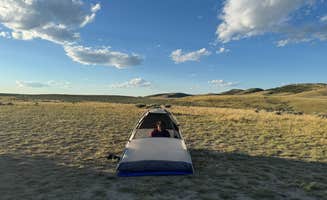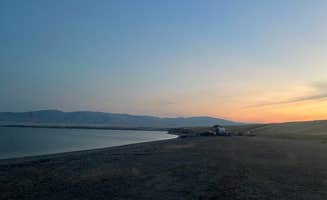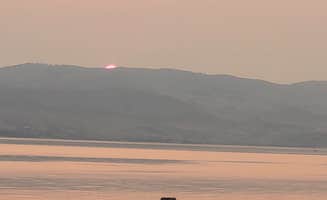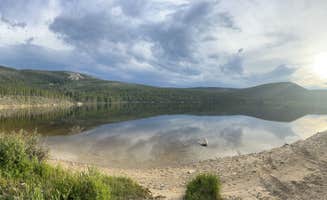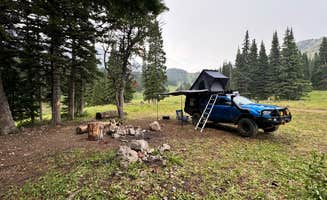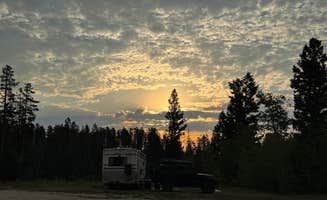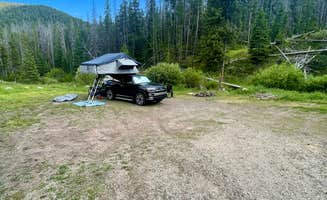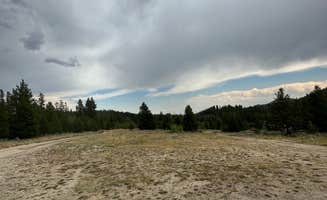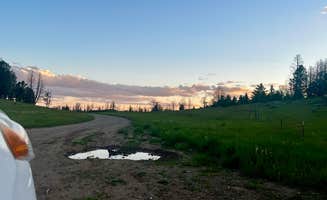Rustic camping near Radersburg, Montana provides access to sites around Canyon Ferry Reservoir, with elevations ranging from 3,800 to 6,500 feet depending on location. Summer temperatures typically reach 85-95°F during peak season while dropping into the 40s at night. Most dispersed camping areas require visitors to travel on gravel or dirt roads that worsen after rainfall, with some sites located on sandy shorelines or in wooded areas away from the lake.
What to do
Mountain biking trails: Copper City BLM offers excellent access to popular mountain bike trails. "Great spot right on parts of the trial! It's open and you can see miles in each direction. No shade, no bathrooms, but most have man made fire pits," notes Ashley M. about Copper City BLM.
Fishing access: Canyon Ferry Reservoir provides fishing opportunities for trout, walleye and perch. Steve M. mentions at Canyon Ferry Lake Dispersed Camping Area that "there is free drinking and washing water at the marina including ice sales and quarter pay showers and a boat ramp. Anyone can use the boat ramp that there are no launching facilities elsewhere."
Hiking nearby: Several forest service trails connect to camping areas. At South Fork Brackett Creek, Kimberly L. shares, "I went for a little walk in the woods and saw a black bear (keep your food and trash stored safe!)" and "The mountains were pink and purple at sunrise, awesome views!"
What campers like
Shoreline access: Sites directly on the water allow for swimming and easy boat launching. At Confederate Disperse Camping Area, Dexter I. notes, "One flat grassy camping spot can be found about half way to the toilet. This grassy spot is your best bet if you have a tent without a crowd. The spot is on the shore of the lake with just a few young willows between you and the water."
Privacy in some areas: Despite popularity, certain spots offer seclusion. According to Austin R., "Pulled in early on a Friday and it was already filling up. Stayed 1 week and was by myself for most of it besides the weekend."
Wildlife viewing: Campers frequently spot wildlife around these areas. At Goose Bay BLM, Terrie L. simply states, "Pretty much can find a nice spot and most all are lake accessible," making it "One of my favorite places on the lake."
What you should know
Seasonal crowds: Many sites become extremely busy during summer weekends. Josh B. reports about Confederate Disperse Camping, "I arrived on a Thursday with only one other person camping within 100 yards of me. By Saturday, there were 12 different campers packed in like sardine along the same 100 yard stretch."
Limited facilities: Most areas have minimal or no amenities. David H. mentions, "You can not stake anything down here. It's all sand. No cover from wind. Does have a vault toilet. Could see how to could very crowded in summer."
Road conditions vary: Access roads can become challenging after rain. At Homestake Pass Dispersed, Marc M. shares, "This place is just a few minutes from the freeway on a relatively good dirt road. There is a big open space that you come to first, which can accommodate a number of RV's."
Cell service spotty: Coverage differs between camping areas. Austin R. notes, "The reception was good," while at other locations service may be limited or nonexistent.
Tips for camping with families
Bathroom access: Look for sites near vault toilets. Rachel S. mentions, "Any car should be able to get down the road to the campsites. A bit buggy but free. Pit toilet available."
Water safety: Many shoreline campsites have no barriers between campsites and water. Sassra D. shares an interesting experience at Confederate Disperse: "There were some of the cutest cows on the way in. It took me over half an hour to locate the owner and get a calf's head unstuck. The water was pretty and my dogs loved all the beach wood."
Wildlife awareness: Teach children about wildlife safety. At Scott Reservoir Dispersed, Don S. reports, "Great place to camp for overlooking the reservoir. Ran into one local taking pictures but left soon after. About 4-5 rock fire rings fairly close together."
Tips from RVers
Size limitations: Many areas accommodate smaller RVs better than large ones. At Homestake Pass Dispersed, Krista R. shares, "The road goes on and on winds around there's plenty of sites everywhere, I have a truck camper, so it's almost like having a car. I did see other people that have larger trailers But none of those big ones."
Leveling challenges: Many sites require leveling blocks. TheFoxphire F. notes, "Found a spot right by the entrance to the large camping area. We were exposed from 3 sides, luckily we could park our jeep for privacy block."
Generator noise: Be aware of generator use by others. TheFoxphire F. also mentions, "Several other campers running gens all day," indicating that noise can be an issue at popular dispersed camping sites near Radersburg.


